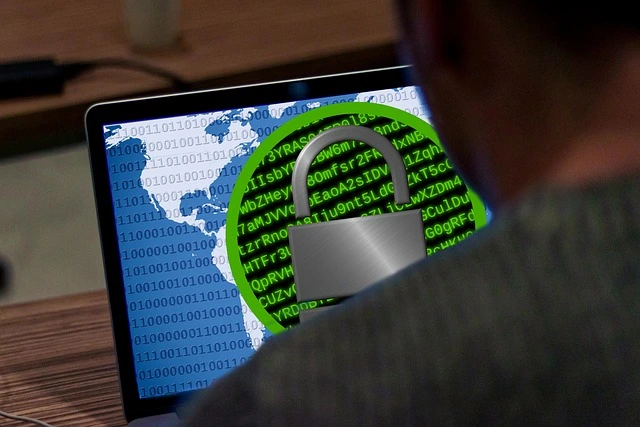As technology continues to evolve and our reliance on it grows, we become more susceptible to cyberattacks that are proliferating exponentially and becoming more sophisticated. Cyberattacks, such as hacking and the release of private information, can be extremely detrimental to any organization. Even Facebook and Microsoft, two of the largest companies in the online world, face daily threats of this nature.
The COVID-19 pandemic has accelerated the digital transformation of numerous organizations. As the number of employees and businesses who work from home increased, so did the number of new hazards they faced. Cybersecurity is one of the most significant concerns in the global risk landscape and one of the greatest threats to organizations.
It is crucial that the entire organization, including all employees, be trained and prepared to defend themselves against cybercrime. Even if the IT department is prepared, that will not be enough to safeguard the business. The following training programs would be extremely beneficial in this situation:
Locking software
Cybersecurity Ventures predicts that ransomware will cause $265 billion in damages by 2031. According to their report, a new attack will occur every two seconds as ransomware users improve their malware payloads and other extortion techniques. In this attack, the victim’s computer is secured, typically via encryption, so that it cannot be used for anything.
In order to regain access to the device, the victim is required to pay a ransom, which is typically paid in virtual currency. There are various methods in which these threats can be transmitted. However, ransomware is frequently distributed via malicious email attachments, infected software applications, compromised websites, and infected external storage.
How to prevent ransomware attacks?
Keep your devices backed up and their software current.
Do not open email attachments.
Integrate a traditional firewall that prevents unauthorized access to devices and networks
Limit the information that cybercriminals can obtain
Internal dangers
These are the most frequent security risks. It typically occurs when employees use their authorized access to harm the organization’s system, either intentionally or unintentionally. The majority of the time, this is because individuals did not adhere to the organization’s rules and policies.
Due to this, they are likely to email customer information to third parties or share their login credentials with others. These attacks utilize security measures to delete, sell, or pilfer data. This can halt operations and cause significant damage to data.
How can we prevent insider hazards to security?
There are various measures that the organization could take to prevent hazards from insider threats. Companies can:
Restrict what employees are permitted to do.
Train your personnel on security and ensure they understand its significance.
Inform employees of the various security threats and what they should do if they occur.
Adhere to the specifications of international standards such as ISO/IEC 27001 and ISO/IEC 27032.
Employ two methods of identification.
Install software to monitor your employees.
Phishing efforts
Phishing attacks are one of the greatest threats to information security in the modern business world. According to Verizon’s 2021 Data Breach Investigations Report (DBIR), phishing will be the most common «action type» in 2020 data intrusions. 43% of breaches involved phishing and pretexting.
Phishing attempts to deceive individuals into divulging sensitive and private information. Typically, assailants send phishing emails that appear to originate from a reputable source. The primary objective is to convince victims to perform actions that perpetrators can use to install malware on their devices.
How to avoid phishing attacks?
Training and raising awareness is one of the most effective means of preventing an occurrence. Employees should be trained and aware of various security concerns and phishing techniques in particular.
Cloud assaults
Cloud is currently an integral component of our daily existence. However, we must be aware that not all cloud services provide secure authentication and encryption. Misconfiguration can result in numerous issues, including intrusions, network gaps, and data loss. IBM claims that straightforward problems account for more than half of cloud security breaches, despite the fact that configuration verification could prevent two-thirds of cloud security issues.
How to thwart cloud-based attacks?
Train and educate your staff.
Establish a data backup plan.
Utilize penetration testing to determine who can access your data.
Establish governance policies and procedures for the cloud
Malvertising offensives
Malvertising, or malicious advertising, is a novel form of cybercrime. This technique is utilized by cybercriminals to insert malicious code into digital advertisements, which directs users to malicious websites or installs malware on their devices. Web users and publishers do not always make it simple to determine who you are.
Therefore, these are typically sent to consumers via legal advertising networks. Any advertisement displayed on a website is potentially infected. Even well-known companies have inadvertently placed malicious advertisements on their websites.
How do you eliminate poor advertising?
Again, awareness is of paramount importance. Some measures should be implemented to reduce the likelihood of becoming ill. These are the items:
Ensure that software and add-ons are current.
Install pathogen protection and ad-blocking software.
Avoid using Java and Flash.
Alternately, it is the responsibility of publishers to protect website visitors from harmful advertisements. To reduce risk, they should take the following steps:
Examine the ad networks that select, inspect, and broadcast advertisements.
Examine the ads they intend to display.
Advertisements should not use Flash or JavaScript.

